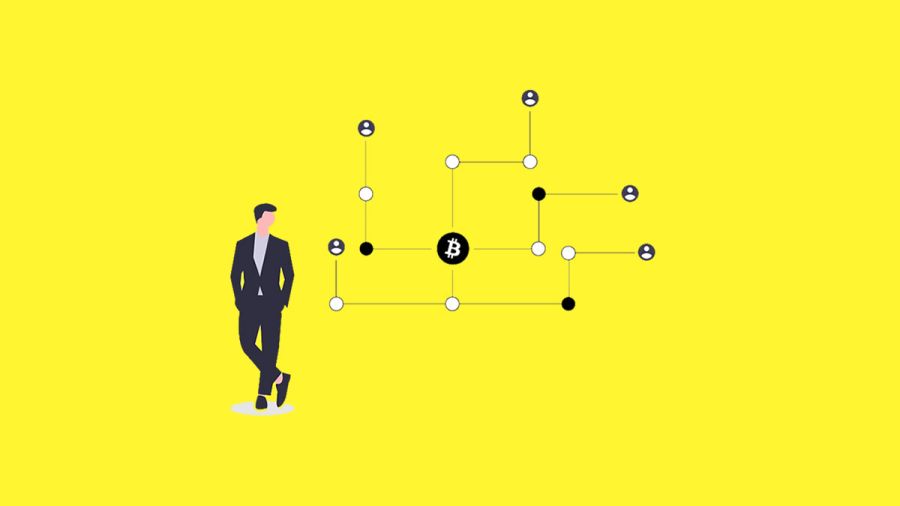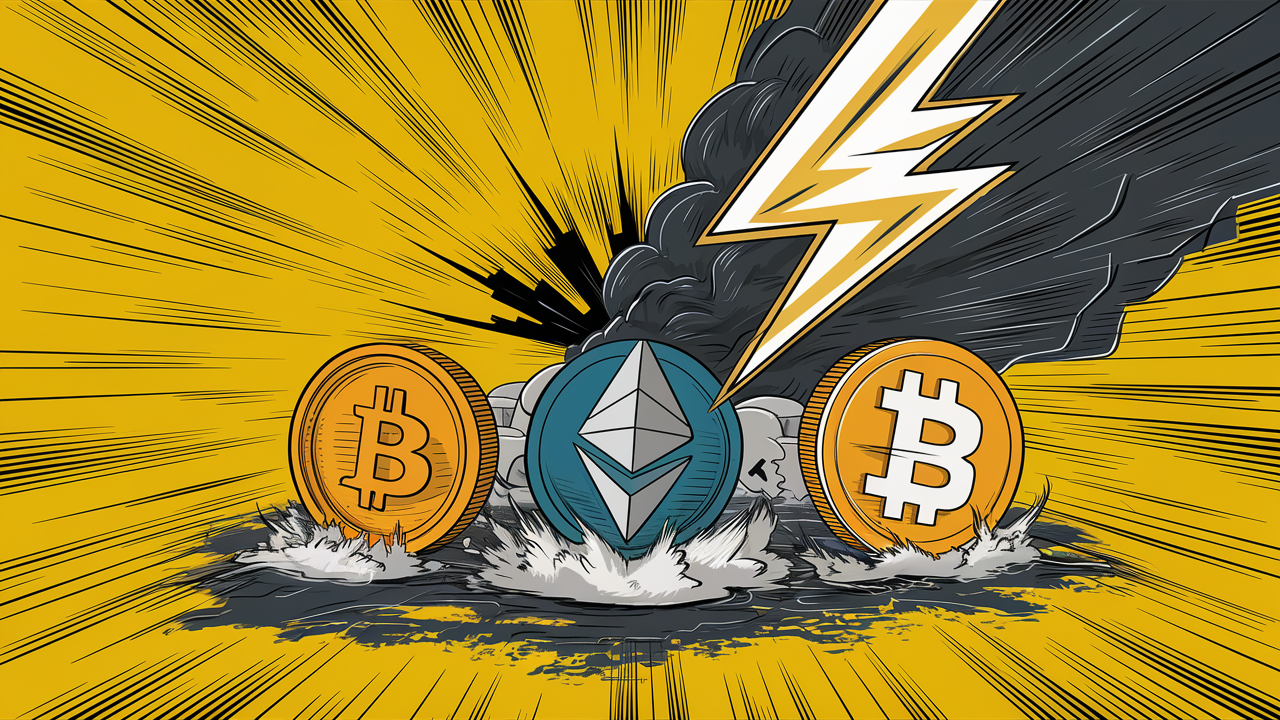How Bitcoin Transactions Work
Transactions are the most important aspect of the Bitcoin network. Everything else is built and organized in such a manner that transactions can be effectively sent, validated, and confirmed. Transactions are made up of inputs and outputs; inputs are what goes into the transaction, and outputs are what comes out. Following that, the outputs of one transaction may be utilized as inputs for subsequent transactions.
A transaction is the decentralized exchange of value between two parties without the need of a third-party middleman. Each Bitcoin transaction is uniquely characterized by a series of digitally signed data. Each participant in a transaction must own a Bitcoin wallet to send and receive the funds. Each transaction may contain a variable number of inputs and outputs.
A transaction must be verified by at least one node before it is broadcast to the Bitcoin network. Confirmation enables miners to determine whether or not a transaction is genuine. After receiving a certain number of confirmations, the transaction becomes irreversible and is referred to as secure’. The number of confirmations needed is determined by the receiver’s risk tolerance.
In a typical Bitcoin transaction, the user’s wallet software queries the block chain for information about previous transactions. Following that, it assembles a “transaction” (actually, it assembles several such, and sends them all at once). This transaction is an offer to transfer coins between users.
Summary of a Bitcoin transaction
- A Bitcoin transaction is that movement of value between two parties without the need of a third-party intermediary.
- Each Bitcoin transaction is uniquely characterized by a series of digitally signed data.
- Each participant in a transaction must own a Bitcoin wallet, and each transaction may contain a variable number of inputs and outputs.
- Each bitcoin transaction consists of a minimum of one input and one output.
- Inputs are the amounts that you use to send a transaction.
- When such assets are received at the other end of a transaction, they are referred to as outputs.
- Each input is the output of a previous transaction from one transaction to the next.
Bitcoins are created via a competitive and decentralized process known as “mining.” Additionally, this currency generation process involves ‘rewards’ payments to the creation of new coins and transaction verification, which are important components of the bitcoin process.
What are the elements of a transaction?
- Transaction hash ID
The transaction hash, also called a transaction ID or TXID, is used to identify a particular transaction. In simple terms, this is the code of the transaction. To view the details of a particular transaction, you must enter this hash or chain of codes in a block explorer.
- Sender’s address
This section shows which addresses are sending cryptocurrencies, as well as how much is being sent. You can click on an address to view its receipt and outbound transaction history.
Unspent transaction output
When you start a Bitcoin transaction, the total amount will be transferred from your address and the rest will be sent to your exchange address. These last ones are called unspent transaction output or UTXO.
An unspent transaction is the amount of bitcoin that was not spent during the transaction, like the change to a cash payment. This unspent amount is the result of a transaction that is returned to the user. The unspent output, logically, remains in control of the sender and may be spent on future transactions.
Exchange address
This is a characteristic of Bitcoin and derived networks such as Bitcoin Cash. Other blockchain networks, such as Ethereum, do not send the total amount to an exchange address.
In the case of Bitcoin, when making a transaction to another address, the total of the original address is transferred to this exchange address, minus the amount that goes to the specified address of the receiver. In this way, the amount of the transaction is sent and the rest remains at the exchange address, totally in the control of its original owner.
- Charges
Most bitcoin networks charge transaction fees. Bitcoin is no exception. This section details the costs associated with the transaction. These costs are awarded to the people who validate the blocks of the network, which are densely packed with transactions.
- Recipient’s address
This allows us to determine which addresses are the intended recipients of a transaction. We can see how much each address receives. As with the issuer address, the receiving address can be clicked to view your transaction history. Typically, the change address is at the bottom of these addresses.
- Transaction status
An often overlooked but critical aspect of a transaction. Before a transaction can be considered complete and legitimate, it must first be verified by those performing the validation. Unconfirmed transactions can still be declared illegitimate or canceled. It is preferable to treat unconfirmed transactions as not received and wait until they are verified.
In addition, it is possible to view multiple shipping or receiving addresses. This is accomplished through the use of more sophisticated functionality known as “batch processing”. This is a feature frequently used by crypto exchanges, where they transfer bitcoins to many recipients in a single transaction to save on transaction fees.
Transaction fees and other details
There are other details such as the transaction date, block number, confirmations, and transaction costs, among others. When you make a bitcoin transaction, you include all of this information in one long string of alphanumeric code.
The history of each and every bitcoin transaction is recorded into a ‘block’ with details that include the date, time, and dollar amount (if any), along with the public P2P bitcoin address of the sender. Every ten minutes the details of verified transactions are encoded into a new block and appended to the blockchain across millions of computers.
The immutable nature of blockchain makes it ideal for recording all manner of transactions. It’s a transparent method of recording data, and it enables the user to control what they want recorded.
As can be seen, there are many details involved in this revolutionary technology, which accompany its transparency, decentrality, and, ultimately, its revolutionary utility.
CryptoPress
Transactions are the most important aspect of the Bitcoin network. Everything else is built and organized in such a manner that transactions can be effectively sent, validated, and confirmed. Transactions are made up of inputs and outputs; inputs are what goes into the transaction, and outputs are what comes out. Following that, the outputs of one transaction may be utilized as inputs for subsequent transactions.
A transaction is the decentralized exchange of value between two parties without the need of a third-party middleman. Each Bitcoin transaction is uniquely characterized by a series of digitally signed data. Each participant in a transaction must own a Bitcoin wallet to send and receive the funds. Each transaction may contain a variable number of inputs and outputs.
A transaction must be verified by at least one node before it is broadcast to the Bitcoin network. Confirmation enables miners to determine whether or not a transaction is genuine. After receiving a certain number of confirmations, the transaction becomes irreversible and is referred to as secure’. The number of confirmations needed is determined by the receiver’s risk tolerance.
In a typical Bitcoin transaction, the user’s wallet software queries the block chain for information about previous transactions. Following that, it assembles a “transaction” (actually, it assembles several such, and sends them all at once). This transaction is an offer to transfer coins between users.
Summary of a Bitcoin transaction
- A Bitcoin transaction is that movement of value between two parties without the need of a third-party intermediary.
- Each Bitcoin transaction is uniquely characterized by a series of digitally signed data.
- Each participant in a transaction must own a Bitcoin wallet, and each transaction may contain a variable number of inputs and outputs.
- Each bitcoin transaction consists of a minimum of one input and one output.
- Inputs are the amounts that you use to send a transaction.
- When such assets are received at the other end of a transaction, they are referred to as outputs.
- Each input is the output of a previous transaction from one transaction to the next.
Bitcoins are created via a competitive and decentralized process known as “mining.” Additionally, this currency generation process involves ‘rewards’ payments to the creation of new coins and transaction verification, which are important components of the bitcoin process.
What are the elements of a transaction?
- Transaction hash ID
The transaction hash, also called a transaction ID or TXID, is used to identify a particular transaction. In simple terms, this is the code of the transaction. To view the details of a particular transaction, you must enter this hash or chain of codes in a block explorer.
- Sender’s address
This section shows which addresses are sending cryptocurrencies, as well as how much is being sent. You can click on an address to view its receipt and outbound transaction history.
Unspent transaction output
When you start a Bitcoin transaction, the total amount will be transferred from your address and the rest will be sent to your exchange address. These last ones are called unspent transaction output or UTXO.
An unspent transaction is the amount of bitcoin that was not spent during the transaction, like the change to a cash payment. This unspent amount is the result of a transaction that is returned to the user. The unspent output, logically, remains in control of the sender and may be spent on future transactions.
Exchange address
This is a characteristic of Bitcoin and derived networks such as Bitcoin Cash. Other blockchain networks, such as Ethereum, do not send the total amount to an exchange address.
In the case of Bitcoin, when making a transaction to another address, the total of the original address is transferred to this exchange address, minus the amount that goes to the specified address of the receiver. In this way, the amount of the transaction is sent and the rest remains at the exchange address, totally in the control of its original owner.
- Charges
Most bitcoin networks charge transaction fees. Bitcoin is no exception. This section details the costs associated with the transaction. These costs are awarded to the people who validate the blocks of the network, which are densely packed with transactions.
- Recipient’s address
This allows us to determine which addresses are the intended recipients of a transaction. We can see how much each address receives. As with the issuer address, the receiving address can be clicked to view your transaction history. Typically, the change address is at the bottom of these addresses.
- Transaction status
An often overlooked but critical aspect of a transaction. Before a transaction can be considered complete and legitimate, it must first be verified by those performing the validation. Unconfirmed transactions can still be declared illegitimate or canceled. It is preferable to treat unconfirmed transactions as not received and wait until they are verified.
In addition, it is possible to view multiple shipping or receiving addresses. This is accomplished through the use of more sophisticated functionality known as “batch processing”. This is a feature frequently used by crypto exchanges, where they transfer bitcoins to many recipients in a single transaction to save on transaction fees.
Transaction fees and other details
There are other details such as the transaction date, block number, confirmations, and transaction costs, among others. When you make a bitcoin transaction, you include all of this information in one long string of alphanumeric code.
The history of each and every bitcoin transaction is recorded into a ‘block’ with details that include the date, time, and dollar amount (if any), along with the public P2P bitcoin address of the sender. Every ten minutes the details of verified transactions are encoded into a new block and appended to the blockchain across millions of computers.
The immutable nature of blockchain makes it ideal for recording all manner of transactions. It’s a transparent method of recording data, and it enables the user to control what they want recorded.
As can be seen, there are many details involved in this revolutionary technology, which accompany its transparency, decentrality, and, ultimately, its revolutionary utility.
© 2024 Cryptopress. For informational purposes only, not offered as advice of any kind.
Related
- What is Bitcoin’s Taproot upgrade? The decentralized currency market has been growing steadily over the last few years. As the first and major cryptocurrency, Bitcoin (BTC) is now widely used by investors who want to maintain total control of their own funds. But there is...
- Crypto Events Archive A growing list of past crypto and blockchain events from around the world. Conferences, workshops, meetups, hackathons, conferences....
- How to earn Bitcoins The most important standard mode for obtaining Bitcoins is by purchasing it on an exchange. Some people prefer to keep them for a while expecting the currency to appreciate, while others prefer to make the most of selling them when...
- Safemoon SafeMoon is a DeFi token (decentralized finance token) that offers fractional cryptocurrency trading, blockchain-based loans, and commission-free exchanges. ...





